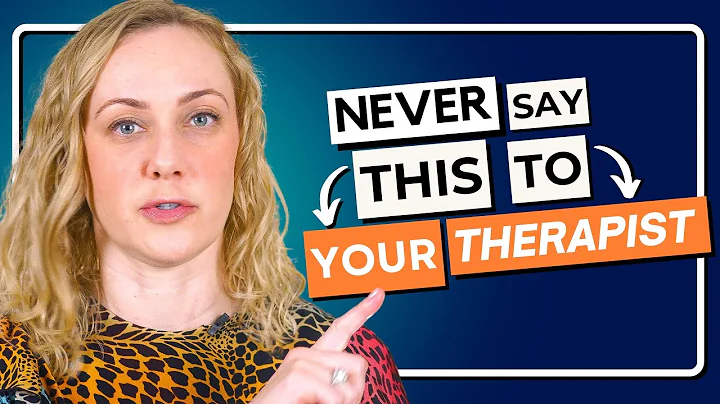
Hello,
Here is Yi Nao Cloud Technology Circle , I am Volume ~
If you suffer from mental illness or mental illness, will you first seek help from a doctor or psychological counselor? For people who already have mental illnesses or mental illnesses, whether to seek treatment is their primary consideration.

For clinical research, psychotherapy is an effective treatment for mental illness (such as cognitive behavioral therapy, case-centered, face-to-face therapy or digital therapy, etc.). However, under actual circumstances, many people do not actively seek treatment, or withdraw from the middle of the treatment process.
For psychological counselors, client participation is very important because whether they are effective in participating is directly related to whether they can obtain good results. However, " Engagement " is an internal cognitive state and is therefore difficult to measure, so engagement is usually inferred from observations that are easier to quantify, such as persistence, exit, or use in the digital realm.

When we talk about digital mental health treatment, the absorption rate of customers is about 3% to 25%. When using digital solutions, low usage and high dropout rates are real problems that persist in reality. This problem becomes more obvious when considering that only 20% of patients with mental health problems first seek treatment. So in the long run, increasing customer engagement is a key focus area in the field of mental health.
Refer to this review to let us further understand the impact of digital interventions on improving the level of readiness for psychotherapy.
Jacinta Jardine, Robert Bowman et al. published this review in the journal Journal of Medical Internet Research (Impact factor 7.08), published in August 2022.
01
Historical obstacles
Historical obstacles
Historical obstacles that have historically hindered face-to-face psychotherapy, such as cost, feasibility, time limit and other factors, have decreased with the emergence of digital treatment. However, this new treatment also introduces a series of new obstacles, such as internet anxiety, privacy issues involved, poor mastery of computer technology, and doubts about the effectiveness of digital therapy itself.
can be said. Among all issues, the most important barrier comes from the client’s attitude towards seeking help and participating in treatment. Among these attitude barriers, the low perception of the demand for and intrinsic self-stigmatism is the most common.
02
Motivation changes
Motivation is a term used to describe the analysis and habitual process of motivating and guiding behavior, thus including attitude barriers discussed earlier, as well as other factors. The statistics show that up to 80% of people are not ready to change when seeking treatment.
The most prominent theory in explaining motivation and changing is Cross theory model (TTM) . The process of change it presents is an important strategy to promote behavioral change. The process of change falls into two categories: cognitive process and behavioral process. Cognitive process mainly obtains information through individual behaviors, and the behavioral process obtains information through environmental events. The stages of change presented in TTM are preconsideration, thinking, preparing, acting and maintaining, so the theory begins a broader thinking process not only in behavior, but before one considers change.
03
Motivational Interview
It can be said that Motivational Interviewing (Motivational Interviewing) is the most recognized of these interventions because it has a significant impact on patients' compliance with subsequent treatment and treatment results. It can be said to be a synergistic but "scattered" treatment. The goal of motivational interviews is to guide rather than make direct demands on customers, cultivate autonomy through open questions, and arouse personal reasons for customers to change. Specific techniques or tools used by
MI practitioners (which may be called " component ") include exploring the causes of change, weighing the pros and cons of change, developing the differences between the ideals and current state of the client, and building confidence and self-efficacy.
Simply put, the key causal model of motivational interviews is that customer speech affects customer outcomes, which means that the more favorable the customer talks about behavioral changes, the more likely they are to make changes. Originally developed as an independent intervention for alcohol abuse, MI is now used as a pretreatment intervention for a range of mental illnesses, including anxiety and depression.
04
33Intervention form
In the 48 literatures studied by the author, 22 are network-based programs, and below are some filtering scale tools, videos, related APPs, and websites. When facing client treatment plans, 27 articles mentioned traditional help at relevant professional levels. Among the remaining 21 articles on specific treatments, face-to-face treatment accounts for the largest proportion (4 articles), network treatment (6 articles), and telephone treatment (1 article).
05
intervention duration
Most intervention time is about 30 minutes, no more than 90 minutes.
06
Intervention mode
motivational interviews (16 articles, 33%), cognitive behavioral therapy (6 articles, 13%), and cross-theoretical models (4 articles, 8%).
07
3Address to provide intervention measures
When customers do not seek help, the frequency of various forms such as social media, clinicians or health service institutions recommendations, marketing organizations, psychology experimental groups, emails, digital marketing has appeared similarly, indicating that the influence of network and digital publicity has gradually increased in recent years.
08
Discussion
The most obvious point after reviewing these literatures is that not only the types of digital preparation interventions that have been used, but also there are significant differences in other aspects such as usage and evaluation methods. There is a potential for finding it when it comes to the feasibility of providing interventions with digitalization.
Effectively identifying the change stage of customers is an important direction for treatment. You can evaluate it by asking simple questions such as "Are you interested in treatment?" or seeking some questionnaires, stage scales, etc. Related website interventions use motivational change phases to construct the title of the website navigation (“Do I have a problem?” “Why should I get help?” “Do I want/need help?”) to let clients choose their stage themselves, and thus proactively adjust the treatment process themselves.

Digital interventions based on personal information can be tailored to their needs from a broader level based on the personal situation of the customers.Here the author gives an example of a case intervention with suicidal stigma. Does the client attempt to commit suicide or have the idea of suicide? Did any close people commit suicide? Interested in gene-related topics?
Previous studies have shown that face-to-face motivational interviews are most beneficial for those who have not yet been motivated or are about to participate in treatment. Meanwhile, simple digital interventions are as effective as face-to-face motivational interviews, but only target people who already have goals and motivations. They just need someone else to give a slight push from behind and actively interact with the consultant, which can effectively change and improve the effectiveness of individual treatment.
09
risk
Actually, the emotions of individuals receiving mental health treatment are sensitive and vary from person to person. So when we develop and prepare interventions, we should take a cautious approach to prevent the processed information from bringing more unnecessary negative emotions to our customers.
10
Conclusion
Digital interventions to improve the degree of psychological treatment preparation are broad and diverse. The interventions involved range from simple videos and advertising to larger web projects, and they can all be used to help customers change at different stages.

Although these easily accessible digital methods have the potential to allow people to reduce mental health treatment gaps in preparation for treatment, they are not without risks. The complexity of shame, motivation, and individual emotional responses to treatment of mental health suggests a cautious approach when developing and measuring ready interventions. Therefore, the results of this review suggest that the implementation and adoption of these digital interventions are important factors to be considered in design, implementation, and measurement, but further qualitative and longitudinal studies are still needed to deepen our understanding of the changing processes related to treatment readiness.
References : Jardine, Bowman, Doherty (2022) Digital Interventions to Enhance Readiness for Psychological Therapy: Scoping Review. J Med Internet Res 24(8) e37851
Note: The pictures in the article are from the Internet. If there is any infringement, you can contact us to delete them.
content | Volume
typesetting | Volume
proofreading | Ting Zhang Sister Miaojun











